Can Dogs Eat Liver? Vet Guide to This Nutrient-Dense Organ Meat (Benefits & Risks!)
- 16 Apr 2025 10:35
As caring pet owners constantly seeking nutritious options for our dogs, organ meats often enter the conversation. Liver, in particular, is frequently hailed as a "superfood" due to its incredible density of essential vitamins and minerals. This leads many to ask the important question: can dogs eat liver? The answer is a resounding **yes**, liver can be a highly beneficial and nutritious part of a dog's diet. However, this comes with a critical caveat: it **must** be fed in **strict moderation** and prepared correctly due to its potency, primarily concerning the exceptionally high levels of Vitamin A.
This comprehensive guide, grounded in veterinary nutritional science and adhering to E-E-A-T (Expertise, Authoritativeness, Trustworthiness) principles, will explore the significant benefits of feeding liver, the serious risks associated with overfeeding (especially Vitamin A toxicity), the pros and cons of different types of liver (chicken, beef, etc.), safe preparation methods, and crucial guidelines on portion control to ensure this nutrient powerhouse remains a healthy addition, not a hazard.

What is Liver? A Vital Organ & Nutritional Goldmine
Liver is a vital organ found in all vertebrates, including the animals commonly consumed for meat like chickens, cows (beef), pigs, lambs, turkeys, etc. Its functions are numerous and essential:
Filtering toxins from the blood
Producing bile to aid digestion
Metabolizing fats, proteins, and carbohydrates
Storing essential nutrients, particularly vitamins (like A, D, E, K, B12) and minerals (like iron and copper)
It's this storage function that makes liver incredibly nutrient-dense compared to muscle meat. Its rich, distinct flavor and aroma are also highly palatable to most dogs.
Is Liver Safe and Good for Dogs? The Balanced View
Yes, veterinarians widely acknowledge that plain, cooked liver is **safe and highly beneficial** for dogs *when fed correctly*. It's a natural source of numerous essential nutrients in highly bioavailable forms.
However, its very nutrient density is also its main risk factor. Key safety considerations include:
Vitamin A Content:** EXTREMELY high; requires strict portion control to prevent toxicity.
Richness:** Can cause digestive upset if introduced too quickly or fed in large amounts.
Source:** Liver from different animals has slightly varying nutrient profiles.
Preparation:** Must be cooked plain; raw liver carries bacterial risks.
Moderation:** Cannot be fed as a primary diet component due to nutrient imbalances (especially Vitamin A excess and Calcium/Phosphorus ratio).
Copper Content:** High levels can be problematic for certain breeds prone to copper storage disease.
Therefore, while the answer to "is liver good for dogs?" is yes, it's conditional on responsible feeding practices.
Powerhouse Nutrition: Benefits of Liver for Dogs (In Moderation!)
When included appropriately, liver offers substantial health benefits:
Exceptional Vitamin A Source: Crucial for vision, skin/coat health, immune function, growth, and reproduction. Liver provides preformed Vitamin A (retinol), which is readily usable by the body.
Incredible B Vitamin Complex: Loaded with B vitamins vital for energy, metabolism, and nerve function:
Vitamin B12:** Brain/nerve health, red blood cell formation.
Riboflavin (B2):** Energy production.
Niacin (B3):** Skin health, energy.
Folate (B9):** Cell growth, DNA synthesis.
Pantothenic Acid (B5) & Pyridoxine (B6):** Numerous metabolic roles.
Iron-Rich:** Provides highly absorbable heme iron, essential for preventing anemia and supporting oxygen transport and energy levels.
Excellent Source of Protein: Contains all essential amino acids for muscle building and repair.
Rich in Copper and Zinc: Copper aids iron absorption and tissue health; Zinc supports immunity and skin. (Note copper caution below).
Source of Vitamin D, K, and E:** Contains smaller but valuable amounts of these essential vitamins.
Highly Palatable:** Its strong smell and taste make it an irresistible treat for most dogs, excellent for training or encouraging picky eaters.
These significant benefits of liver for dogs make it a valuable supplement *if* the risks are carefully managed.
The Critical Risks: Why Too Much Liver is Dangerous
Overfeeding liver is where problems arise. The main dangers include:
1. Vitamin A Toxicity (Hypervitaminosis A) - The #1 Risk!
This cannot be overemphasized. Liver is so incredibly rich in Vitamin A that regular overconsumption leads to a serious, potentially debilitating condition.
Mechanism: Vitamin A is fat-soluble, stored in the body (mainly the liver). Excess intake builds up over time to toxic levels.
Symptoms (Usually Chronic): Lethargy, stiffness, lameness, joint pain, reluctance to move, weight loss, poor appetite, constipation, bone spurs (especially cervical spine), muscle weakness, poor coat quality.
Severity: Can cause permanent skeletal damage and significant chronic pain. Irreversible once bone changes occur.
Prevention: Strict portion control and infrequent feeding are essential. Know the Vitamin A content of your dog's main food to avoid accidental overdose.
The risk of Vitamin A toxicity from liver mandates extreme caution with portion sizes.
2. Digestive Upset
Liver is very rich. Feeding too much at once, especially to a dog unaccustomed to it, can easily cause:
Diarrhea
Vomiting
Gas
Introduce tiny amounts gradually.
3. Copper Storage Disease Risk
Liver is high in copper. While essential, certain breeds are genetically predisposed to difficulty excreting copper, leading to toxic buildup in the liver (Copper Storage Disease).
Susceptible Breeds: Bedlington Terriers are most famous, but also West Highland White Terriers, Skye Terriers, Dalmatians, Labrador Retrievers, Dobermans, and others can be affected.
Action: If your dog belongs to a susceptible breed or has liver issues, consult your vet *before* feeding liver or other copper-rich foods. They may recommend avoiding it entirely.
4. Nutritional Imbalance
Liver is not a balanced meal on its own. It's high in Vitamin A, iron, and copper but relatively low in calcium. The calcium-to-phosphorus ratio is also skewed compared to ideal canine requirements. Feeding too much liver as a proportion of the diet can disrupt overall nutritional balance.
5. Bacterial Risk (Raw Liver)
Feeding raw liver carries risks of contamination with bacteria like Salmonella, E. coli, Listeria, or Campylobacter, potentially causing severe illness in dogs and posing a zoonotic risk to humans.
Different Types of Liver: Chicken vs. Beef vs. Others
While all liver is nutrient-dense and high in Vitamin A, there are slight variations:
Chicken Liver: Very popular, readily available, relatively inexpensive. Excellent source of Vit A, B vitamins, Iron. Generally well-tolerated. The focus of "can dogs eat chicken liver".
Beef Liver: Also highly nutritious, often slightly higher in minerals like copper and zinc compared to chicken liver, but also extremely high in Vitamin A. Widely available.
Lamb Liver: Similar profile, rich in nutrients. Good alternative if dog is allergic to chicken/beef, but still needs strict moderation.
Pork Liver: High in Vitamin A and Iron. Raw pork carries potential parasite risks (though lower in commercial US pork); cooking is essential.
Turkey Liver: Similar nutritionally to chicken liver.
The key takeaway is that **all types of liver are extremely high in Vitamin A** and require the same strict moderation, regardless of the animal source.
Raw vs. Cooked Liver: Safety First!
As mentioned previously, **cooked liver is the significantly safer choice.**
Raw Liver Risks: Bacteria (Salmonella, E. coli, etc.), potential parasites. Zoonotic risk to humans handling it or interacting with the dog.
Cooked Liver Safety: Thorough cooking kills harmful pathogens. Makes it safer for both dog and owner. Minimal loss of key nutrients like Vitamin A and Iron occurs with gentle cooking.
Unless under expert veterinary guidance for a raw diet, always feed cooked liver.
Safe Preparation: How to Cook Liver for Your Dog
Cooking liver for your dog is simple and ensures safety:
Source Quality Liver: Buy fresh or frozen liver from reputable sources.
Handle Safely: Treat raw liver carefully to avoid cross-contamination. Wash hands, surfaces, and utensils thoroughly.
Rinse and Trim: Rinse liver under cold water. Trim any tough membranes or excessive fat (though liver is usually lean).
Cook Plain:** Use simple methods:**ABSOLUTELY NO** salt, oil, butter, garlic, onion, spices. Plain only!
Boiling/Simmering:** Gently simmer liver pieces in plain water for 10-15 minutes until cooked through (no longer pink).
Baking:** Bake pieces on a lined tray at ~350°F (175°C) for 15-20 mins.
Pan-Searing (No Fat):** Cook pieces in a dry non-stick pan until cooked through.
Cool Completely: Let cooked liver cool fully.
Chop or Dice:** Cut into very small, pea-sized or smaller pieces for easy portioning and use as treats.
Store Properly:** Refrigerate in an airtight container (3-4 days) or freeze in small portions. Cooked liver makes excellent, high-value training treats due to its strong smell and taste.
This ensures you provide safe, cooked liver for dogs.
Serving Size: The Golden Rule of Moderation!
This is the most critical part of safely feeding liver due to Vitamin A.
Treat Guideline: Liver falls under the 10% rule for treats, but the Vitamin A limit makes the safe amount much smaller than 10% of calories for most dogs.
Organ Meat Limit:** A common veterinary recommendation is that organ meats should constitute **no more than 5% of the total diet by weight**. Some sources recommend even less for liver specifically due to Vitamin A.
Frequency:** Do NOT feed liver daily. Limit servings to **1-3 times per week MAXIMUM**.
Practical Amounts (Plain Cooked, Chopped Liver - Per Serving):****These are general estimates and may need to be lower depending on the rest of the diet.** Always start smaller!
Toy Breeds (~5 lbs): A piece the size of your pinky fingernail.
Small Breeds (~15 lbs): Approx. 1/2 teaspoon chopped.
Medium Breeds (~40 lbs): Approx. 1-1.5 teaspoons chopped.
Large Breeds (~70 lbs): Approx. 1 tablespoon chopped.
Giant Breeds (~100+ lbs): Approx. 1.5-2 tablespoons chopped.
**CONSULT YOUR VET:** The best way to determine the safest amount and frequency for YOUR dog, considering their specific diet and health.
Understanding how much liver a dog can eat safely involves tiny portions, infrequently.
Table: Liver for Dogs - Balancing Act Summary
| Benefits | Risks / Concerns |
| High-Quality Protein | Vitamin A Toxicity (Hypervitaminosis A) - MAJOR RISK! |
| Rich in Vitamin A (for vision, skin, immunity) | Digestive Upset (if too much/too rich) |
| Excellent Source of B Vitamins (B12, etc.) | High Copper Content (Risk for certain breeds) |
| Packed with Iron | Bacterial Contamination (if raw) |
| Good Source of Copper, Zinc, Selenium | Nutritional Imbalance (if fed as large part of diet) |
| Highly Palatable Treat | Potential Allergies (depending on source animal) |
Need Quick Pet Nutrition & Safety Info? PettureX Can Help!
Navigating safe portion sizes and potential risks of nutrient-dense foods like liver can be confusing. The PettureX App offers innovative AI-powered tools to assist pet parents:
Food Safety Information: Check general guidelines on feeding specific items like liver to pets.
AI Symptom Analysis: If your pet shows unusual signs after eating something new, input the details for preliminary AI insights.
24/7 AI Vet Consultation: Get immediate answers to questions like, "What are the symptoms of Vitamin A toxicity in dogs?" or seek guidance on managing dietary concerns anytime.
PettureX provides valuable, instant support. Remember, however, it offers preliminary guidance and **cannot replace professional veterinary diagnosis, treatment, or personalized nutritional advice.** Always consult your local veterinarian for medical concerns and specific dietary recommendations, especially regarding potent foods like liver.
Conclusion: Liver - A Superfood Treat Requiring Super Caution
In conclusion, the answer to "can dogs eat liver?" is **yes**, but it comes with a critical warning label. Plain, cooked liver is packed with beneficial nutrients but is exceptionally high in Vitamin A.
Key Takeaways:
Benefits: Excellent source of protein, Vitamin A, B Vitamins, Iron, Copper, Zinc. Highly palatable.
Major Risk: **Vitamin A Toxicity** from overfeeding is the primary danger. Requires strict portion control.
Other Risks: GI upset, high copper (for some breeds), bacterial risk (if raw).
Safe Preparation: Must be **cooked plain** (no seasonings/fat) and chopped small. Avoid raw liver.
Strict Moderation: Feed only tiny amounts, 1-3 times per week maximum. Should be<5% of the total diet.
Vet Consultation Essential: Especially for determining safe amounts and for dogs with health issues or copper sensitivity.
When used responsibly as a small, infrequent treat, cooked liver can be a fantastic, healthy addition to your dog's diet. However, carelessness with portion sizes can lead to serious health problems. Always prioritize safety and moderation when feeding this potent organ meat.
Related
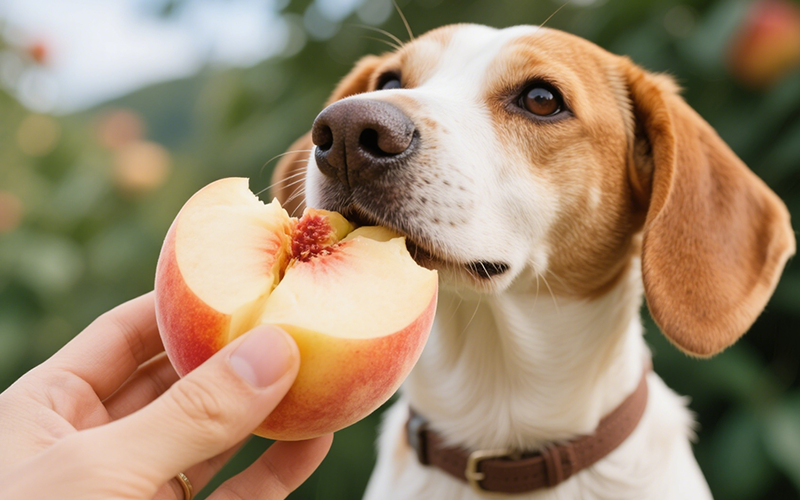
Can Dogs Eat Peaches? Vet Explains Benefits, Cyanide Risks & Safe Serving
- 16 Apr 2025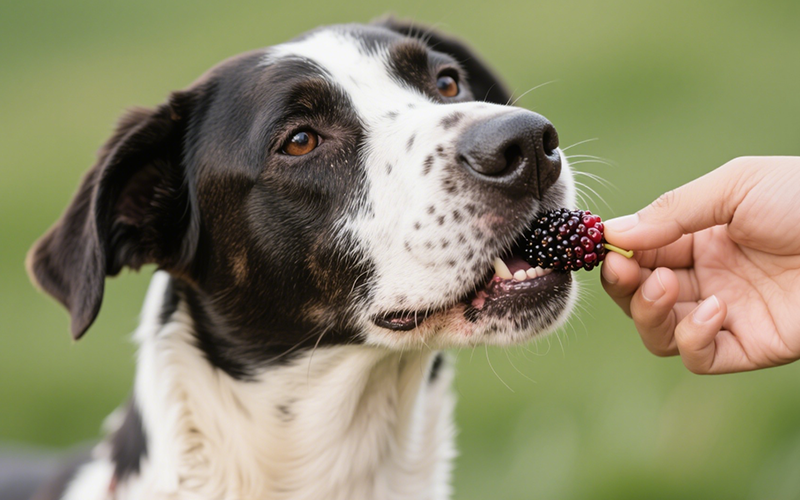
Can Dogs Eat Mulberries? Vet Explains Safety, Benefits & Potential Risks
- 16 Apr 2025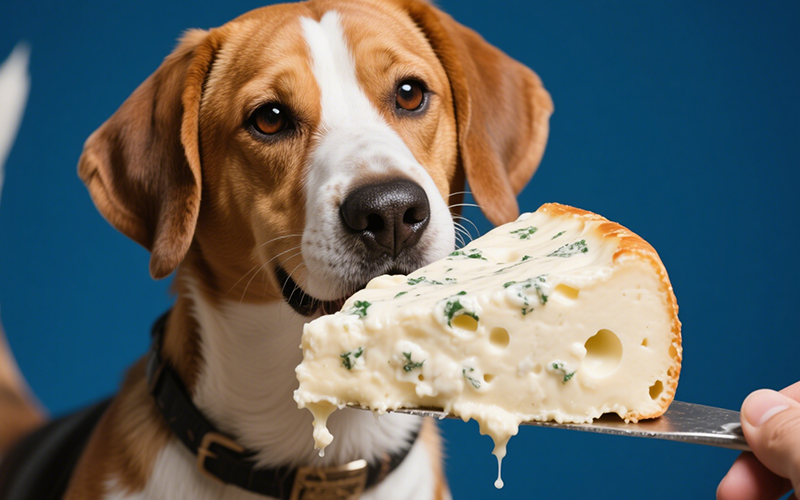
Can Dogs Eat Mozzarella? Vet Explains the Cheesy Truth (Risks & Benefits)
- 16 Apr 2025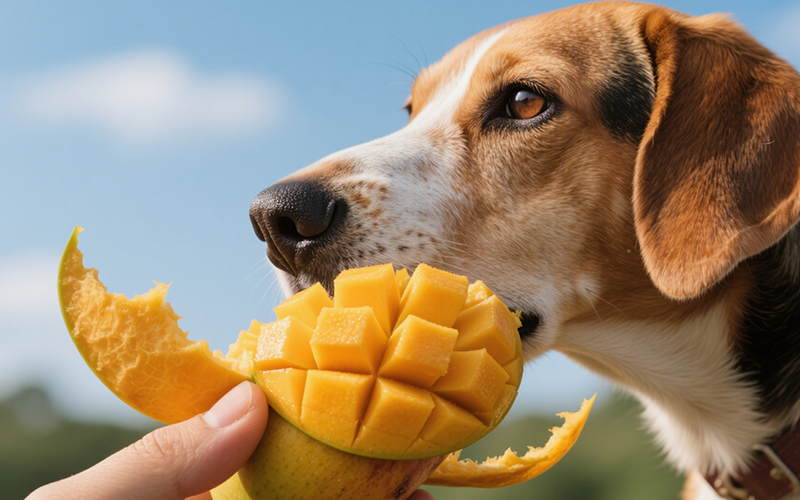
Can Dogs Eat Mango Skin? Vet Explains Why It's a Risky Chew!
- 16 Apr 2025
Can Dogs Eat Maple Syrup? The Sugary Truth & Why Vets Advise Against It
- 16 Apr 2025
Can Dogs Eat Mac n Cheese? Vet Explains Why This Comfort Food Is Unsafe!
- 16 Apr 2025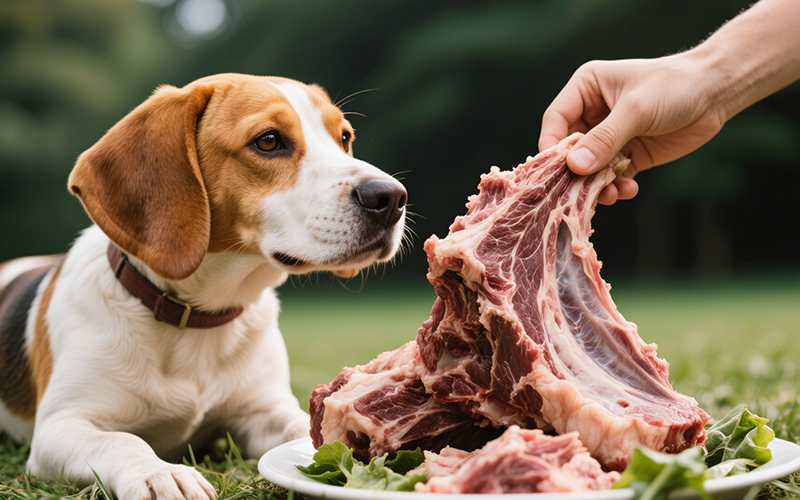
Can Dogs Eat Lamb? Vet Insights on This Nutritious Meat Option
- 16 Apr 2025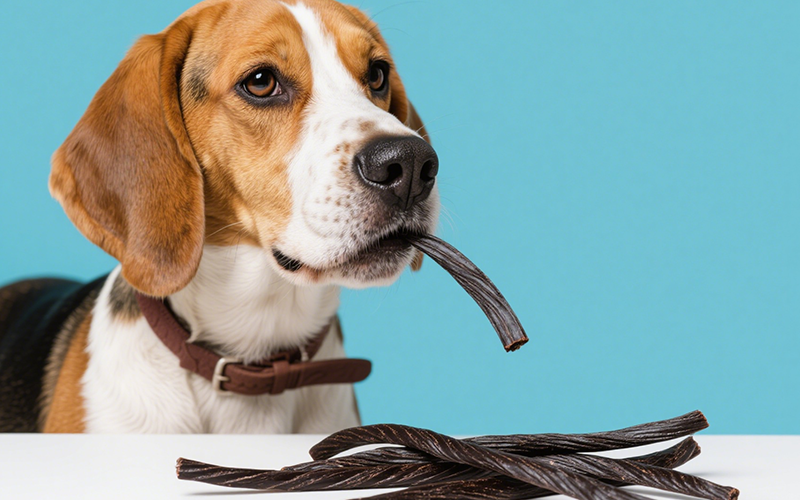
Can Dogs Eat Licorice? The Sweet Danger & Glycyrrhizin Risk Explained by Vets
- 16 Apr 2025
Can Dogs Eat Jelly? The Sweet Truth About Sugar, Xylitol & Why Vets Say No!
- 16 Apr 2025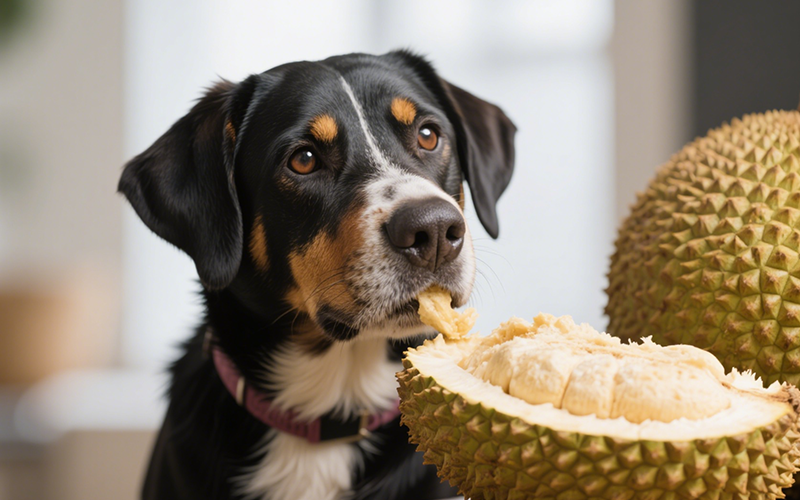
Can Dogs Eat Jackfruit? Vet Explains Potential Risks & Safe Preparation
- 15 Apr 2025
